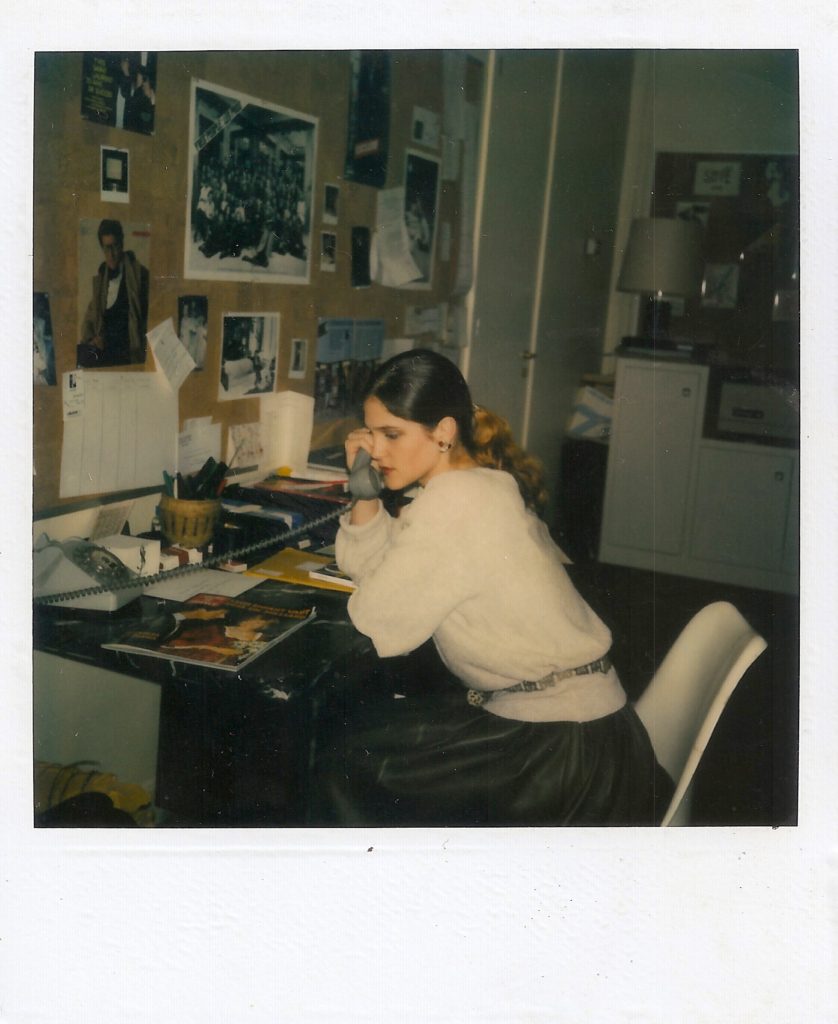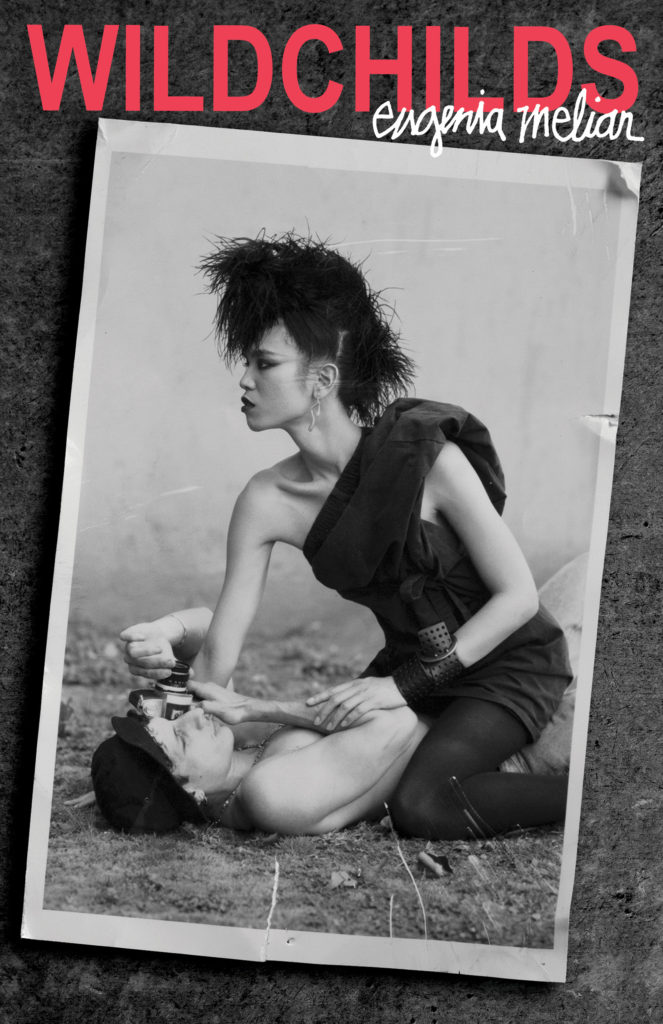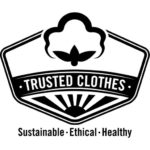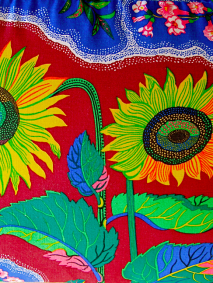COMFORT EATING, COMFORT BUYING. TWO CLICKS AND IT’S OVER. YOU WEAR IT ONCE.
Winter fell, we had no autumn this year in Madrid. In two days, I went from going to my market in a T shirt, to layering up and shivering my way through the local neighborhood shops. One lightbulb here, my 2019 diary, which I have to order from the stationary shop and wait for; it will take one week. And carrots and leeks for my chicken soup. Amazon? You could not pay me. I would rather lug my straw basket around for an hour, chatting to the shopkeepers as I go, complaining about the sudden chill, than double click on Amazon Prime to have my stuff delivered in 24 hours by a harried unknown man I will never see again. You read everywhere that you have to contribute to your community, that you have to have a sense of belonging somewhere. I do, I have created my community in my Madrid barrio. It makes me feel welcome when I come back from the USA. When an old shop closes because of E-commerce, we all feel sad.
It is now wintertime and I have to put away my summer threads. This is the moment of the year that I dread: The Cull. I have one strict rule: for every item of clothing that comes in, two have to go out. This is hard: I have items of clothing that I bought thirty years ago and I still wear. I also have my mother’s clothes that go back fifty years and which are still impeccable. Clothes that were made to last. The Cull now consists in giving away the size two pants that I can no longer fit in. I keep them in my closet not because of nostalgia, but because they are so beautifully made. I have not worn some of them since I was in my mid-thirties but they are exquisite timeless pieces that will make someone happy soon. My friends say “sell them, they are vintage, they are designer, they are in perfect shape…you will get a good price for them.” But I cannot get myself to do that, I would rather wait until I meet the right person to give them to, as I often do. A best friend’s willowy teen daughter, another friend who is young and tall, or simply a normal sized friend who has no boobs and who can fit in that tight Margiela sweater which I have worn for too many years when my grungy look was more masculine or street. In my twenties I modeled and many of those beautiful clothes were gifts from designers that could not afford to pay us models. We worked gladly in exchange of good pieces.
During The Cull I will take out those pants for one last desperate try before putting them way for another year of loving them. Jackets fit, so do blouses and coats. I pull them down and put them at the front of my rack: those I will wear this winter, they are three decades old.
This year I am excited with The Cull: the model on the cover of my novel Wildchilds is the wonderful Dara Allen. She is fierce looking, she has a modern look; she is a tomboy who can, in the bat of an eyelid, look chic, ladylike and demure. She is a surprising girl: she models, she writes, she is vocal about the causes that are dear to her and on Instagram she poses for endless stunning selfies that are about style and not fashion. She inspires me in a way that few kids have done. She is tall and tiny, I now cannot wait to give her my clothes. This September I gave her a sample-size Missoni knit prototype dress that I could not even breathe in. Dara gave it a new life and wore it over her cargo pants as a tunic during New York Fashion Week. It gave me so much happiness to see that dress come to life again.
From Madrid I fly to New York and one third of my suitcase will be filled with clothes for Dara. I have never had to throw away a single item of clothing from my Cull.
The few times I have bought cheap fast fashion on a whim, I have regretted for it a long time. Those pieces never last beyond the first wash, when they lose their shape and hang like sad crumpled reminders of a foolish caprice, a mindless action; more waste.
Mindless shopping, like the short-lived satisfaction that you get from eating half a gallon of ice cream. Comfort eating, comfort buying. Two clicks and it’s over. You wear it once. I bought few clothes but everything I bought I saved for, for many months or even years, scrimping on my lunch allowance, cutting down on other things. While I was writing Wildchilds and had no income, so I could not afford to buy a great coat, because buying a good coat is like investing in your first sofa: it is there for years to use. Finally, last September, I bought my coat. It was the only expensive piece I added to my wardrobe and now It is there to cherish. Every time I put it on I admire the sharp cut, the perfect tailoring, the fall of the thick dry wool, the quality of the lining, the fit of the sleeves. I also buy vintage silk blouses from the eighties, blouses from Saint Laurent and Feraud. One blouse a year, maybe two. That, and a good haircut, is all I need to refresh my look.
My favorite vintage find: a 1980’s Yves Saint Laurent blouse worn with my trusted R13 black jeans that are five years old and made to last
Impulse shopping, click-to-buy while you stream the new season’s fashion shows, ‘this is in, this is out. Buy it now, it’s a must have.’ Magazines play on our weaknesses, they thrive on them and make us feel insecure. Expensive clothes as weapons that hide our lack of personality, that feed on our lack of culture and self-worth. Does buying like this give us pleasure for five days or does it make us happy in the long run. Impulse shopping…browse, click, deliver in a big box of unused packaging. We try it on: “what was I thinking?” the item comes with instructions on how to ship it back; it’s free, we don’t care. Another big box of cardboard that will be thrown away. Another UPS, more waste, more fuel, more manpower, just because we can. It’s free, who cares? I’ll just click on something else and if I don’t like it I’ll send it back again.
Watch the excellent documentary The True Cost: Did you know that the people making your cheap clothes make just $2 a day and to increase their salaries to $5 a day would make a difference of only 25 cents on your fast clothes, which to them is a difference between living with a little dignity or most likely dying? Did you know that your cotton jeans are so full of pesticides that they could make you sick? Fashion brands can and should continue employing the thousands of people that sew for them in these faraway places, but they should pay the right price: dignified pay, more humanly hours, environmentally safe, less quantity, more quality, less speed, more care: human dignity and health has a price. This workforce is nameless and faceless because they toil in remote unregulated sweatshops. This cruel business model has to stop. The only way we can make a difference is if us consumers stop buying and instead we start flooding their websites with complaints, with signed petitions: no more H & M unless you treat your workmen with respect.
Change the way you shop. Buy less, buy better or buy used. There are fantastic platforms like Depop that sell cheap but good secondhand clothes and makes it easy, unlike Ebay which is complicated, long and daunting. Depop is the preferred platform of the young and fashion savvy who love new looks but who refuse to contribute to the sad cycle of fast cheap fashion.
Make a lot of small differences, only you can change the world one lightbulb at a time. And make sure that you have to walk to buy that lightbulb, and that you know the name of the person that sold you that lightbulb. Every lightbulb counts.
As written for TrustedClothes.com







